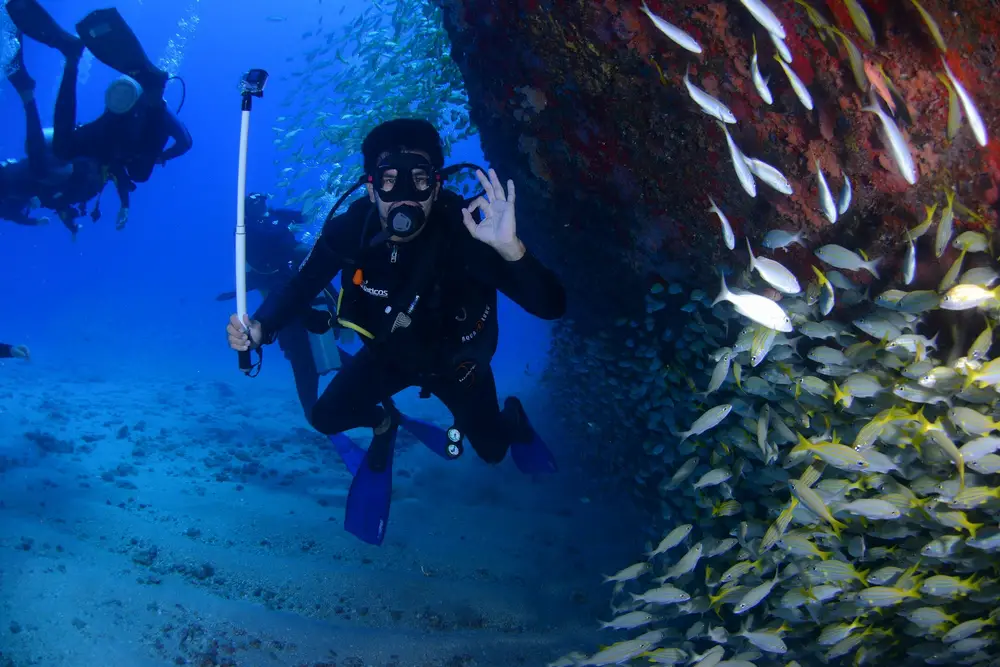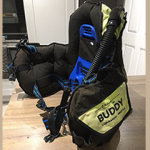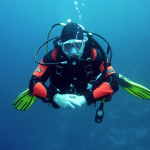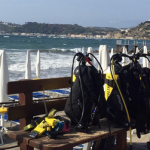
When scuba diving, it is generally expected that you will be able to sink due to the weight of the equipment and your body.
You will not be able to sink when scuba diving if you cannot control your buoyancy control and if you don’t release air from your buoyancy control device, or if you have insufficient weight or the weight is incorrectly distributed and if you have equipment issues will also prevent you from sinking.
If you are having difficulty sinking while scuba diving, there could be several reasons for this:
- Buoyancy control: Scuba divers use buoyancy control devices, such as buoyancy compensators (BCs) or drysuits, to manage their buoyancy underwater. By adding or releasing air from these devices, divers can achieve neutral buoyancy or control their ascent and descent. If you are unable to sink, it is possible that you have too much air in your BCD or that you are not properly deflating it. Ensure that you release air from your BC while descending to increase your weight and enable sinking.
- Insufficient weight: Scuba divers often wear additional weights to help them overcome their natural buoyancy and sink. These weights compensate for the buoyancy of the wetsuit, exposure suit, and any air in the lungs. If you find it difficult to sink, it is possible that you are not carrying enough weight. Speak to your dive instructor or divemaster, who can assess your buoyancy and recommend the appropriate amount of weight for you.
- Improper weighting distribution: The way weights are distributed on your body can affect your ability to sink. If your weights are positioned too high on your body, it can make it more difficult to descend. Make sure your weights are distributed evenly, and experiment with their placement to achieve proper balance.
- Equipment issues: Sometimes, equipment malfunctions can affect your ability to sink. For example, if your BCD inflator valve is stuck open or there is a problem with your weight system, it could result in excessive buoyancy. Regularly check your equipment and have it serviced by a professional to ensure it is in good working order.
It’s essential to address any concerns about sinking while scuba diving with a certified dive professional who can provide personalised guidance and assistance. They can assess your equipment, weight distribution, and technique to help you achieve proper buoyancy control.
Remember, maintaining good buoyancy control is a fundamental skill in scuba diving to ensure your safety and enjoyment underwater.
How do you sink in scuba diving?
To sink while scuba diving, you can follow these steps:
- Proper weighting: Ensure that you are wearing the appropriate amount of weight to counteract your natural buoyancy. The amount of weight needed can vary depending on factors such as your body composition, the thickness of your exposure suit, and the equipment you are carrying. Work with a dive professional who can help you determine the right amount of weight for you.
- Buoyancy control: Use your buoyancy control device (BCD) to manage your buoyancy. The BCD has an inflation and deflation system that allows you to add or release air. To sink, you need to deflate the BCD by venting air from it. There are usually one or more buttons or levers that you can use to release air from the BCD. Do so gradually while maintaining control to avoid rapid descents.
- Proper body positioning: Position your body correctly to aid in sinking. To descend, assume a slightly head-down position with your legs angled downward. This posture helps streamline your body and reduce resistance, assisting in sinking.
- Exhale and control breathing: Exhale fully before and during your descent. As you exhale, the volume of air in your lungs decreases, reducing your overall buoyancy. Controlling your breathing and exhaling slowly can further facilitate sinking.
- Finning technique: Use an efficient finning technique to propel yourself downward. Flutter kicks or frog kicks are commonly used to generate downward thrust. These techniques involve rhythmic and deliberate movements of your fins, allowing you to move through the water more efficiently.
Remember, maintaining control over your descent and ascent rates is crucial for safety. Avoid rapid descents, as they can lead to barotrauma or other diving-related issues. Always dive within your training and experience level and follow the guidelines provided by your diving certification agency.
If you have any concerns or are unsure about sinking, seek guidance from a certified dive professional before attempting any dives.
At what depth do you start sinking?
The concept of sinking while scuba diving is not solely dependent on a specific depth. Whether you sink or float underwater is determined by your overall buoyancy control, which is influenced by various factors, including your body composition, equipment, weighting, and technique.
When properly weighted and with correct buoyancy control, scuba divers can achieve neutral buoyancy, where they can hover or stay at any depth without sinking or floating. Neutral buoyancy allows divers to maintain a stable position in the water column, conserve energy, and interact with the underwater environment more effectively.
The depth at which you begin to sink will depend on your specific circumstances and the adjustments you make to your buoyancy control. By releasing air from your buoyancy control device (BCD) or adding weight, you can adjust your buoyancy to sink at shallower depths. Conversely, adding air to your BCD can increase your buoyancy and allow you to float or ascend.
It’s important to note that as you descend deeper underwater, the increased pressure causes the air spaces in your diving gear and body to compress. This compression affects your buoyancy, and adjustments to your BCD and weight may be necessary to maintain neutral buoyancy throughout the dive.
In summary, sinking while scuba diving is not determined by a specific depth but rather by achieving proper buoyancy control through weight adjustments, BCD inflation or deflation, and maintaining good diving techniques. Consult with a certified dive professional for guidance on achieving optimal buoyancy control based on your specific diving conditions and equipment.
How do free divers sink so fast?
Free divers are able to sink rapidly due to a combination of several factors:
- Buoyancy control: Free divers often use specialised equipment like wetsuits or weight belts to counteract their natural buoyancy and facilitate sinking. These additional weights help them overcome the buoyant force and descend quickly.
- Proper technique: Free divers employ specific techniques to optimize their descent speed. They streamline their body by assuming a hydrodynamic position, typically with arms extended overhead and legs together. This minimises water resistance and allows them to move through the water more efficiently, promoting faster sinking.
- Equalisation: Free divers perform equalisation techniques to manage the pressure changes that occur as they descend. By equalising the air spaces in their body, particularly in the ears and sinuses, they can comfortably descend without experiencing discomfort or injuries caused by barotrauma. Efficient equalisation techniques ensure a smooth descent without the need for frequent stops, enabling free divers to sink quickly.
- Controlled breathing: Free divers utilise specific breathing techniques to prepare their body for the descent. By taking deep breaths and then exhaling fully before submerging, they remove excess air from their lungs, reducing buoyancy and facilitating faster sinking.
- Adaptation and training: Experienced free divers develop the ability to increase their overall density by adjusting their body composition and controlling their lung volume. Through regular training and adaptation to the aquatic environment, they can achieve a higher level of control over their buoyancy and sink faster.
It is important to note that free diving carries inherent risks, particularly when attempting rapid descents. These techniques should only be performed by trained and experienced individuals who have developed the necessary skills, knowledge, and safety protocols to engage in this demanding sport.
I hope you enjoyed this article about why can’t I sink when scuba diving
I’d love to hear from you. Tell us about your adventures of diving and snorkelling. Please use the comments section below. Please also share your photos. Either from your underwater cameras or videos from your waterproof go-pro’s!
If this article hasn’t answered all of your questions. If you have more questions either about snorkelling or scuba diving (or specifically about why can’t I sink when scuba diving), please comment below with your questions.
There will also be many more articles about scuba and scuba diving safety tips (and on snorkelling too) for you to read and learn about this fabulous sport.
Have fun and be safe!





